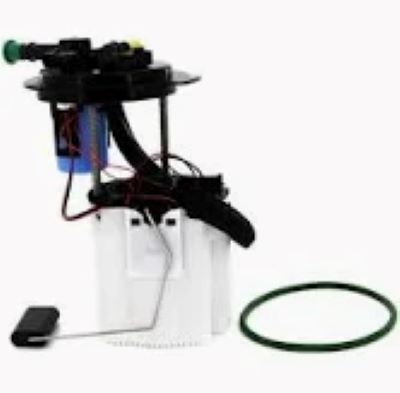How can I check my fuel pump? Listening for a Hum One of the easiest methods to testing your fuel pump is by listening for a hum when turning the key on (it shold run momentarily). In most cars, It activates the fuel pump for a couple of seconds to pressurize the fuel system. If it does not make this sound, the pump or electrical circuit may be bad. While low pressure injectors (carburetors, TBI and single-port injection) rely on 10-15 PSI to promote good induction of fuel mixture inside the cylinders, high-pressure modern vehicle pumps run at 40-55 PSI.
One durable way to test if the fuel pump is working properly is by using a fuel pressure gauge. Attach the gauge to the fuel rail and turn on your car. The number should be close to the manufacturer's specifications, which are generally listed in the vehicle's manual. The typical measure of output pressure to look for is about 10% to 15% lower than the spec (a reading below that should raise a red flag for a pump on its last legs). For example, a 2010 Honda Civic calls for a fuel pressure of 48 PSI; if it reads much off of the aforementioned number that is an indication of a pump or fuel delivery issue.
The other quick way to confirm the fuel pump is by checking its electrical connections. Using a multimeter, you can read the voltage to the fuel pump relay or directly at the wire harness for the pump itself. The pump needs approximately 12 volts to run at its best. Low voltage might cause the pump to give poor performance hence making your engine misfire or fail. As I remember an old mechanic tell me one time, “more fuel pump failures are due to bad connections than pumps.

The most important thing to know is the industry term 'vapor lock,' which happens when fuel turns into vapor prior to reaching the engine, largely due to heat overload. This problem is more of a concern with older vehicles but can also hurt fuel pump operation by limiting the flow of fuel. To test for vapor lock you can take the temperature of the fuel and also look at the pump after running.
Checking the fuel pump often requires a look at the fuel filter for blockages. A dirty or clogged filter can add extra strain on to the pump and cause it fail out sooner than it should! Replacing the filter every 30,000 to 40,000 miles (or less) can help your pump have a much longer life. That is correct, a filter which has been well maintained can reduce the risk of pump failure by 20%.
As the automotive expert ChrisFix so rightly said, "Figuring out fueling problems before they become an expensive repair!". For things like fuel pumps, it could mean the difference between replacing a pump ahead of time, or having to have your vehicle towed because it died on you.
If you would like to know more about fuel pumps, or if you need a dependable replacement, this webpage is for Fuel Pump that can offer you heaps of premium options designed specifically for your car.
